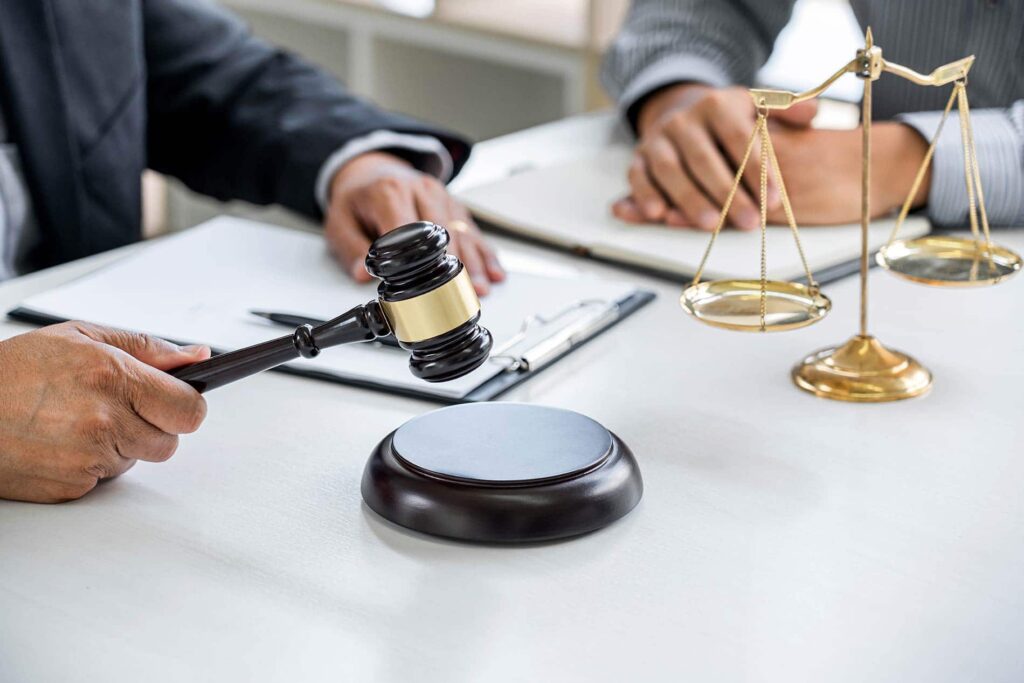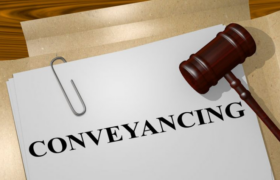Conveyancing is a crucial process when it comes to buying or selling properties. It involves the legal and administrative work required to transfer ownership from the seller to the buyer. However, this process is not without its challenges and pitfalls. To ensure a smooth and successful conveyancing process, it is important to understand the common pitfalls and strategies to avoid them. In this article, we will explore the conveyancing process, identify common pitfalls, discuss strategies to avoid them, and highlight the role of technology in streamlining conveyancing.
Understanding the Conveyancing Process
Definition and Importance of Conveyancing
Conveyancing can be defined as the legal process of transferring property ownership from one person or entity to another. It involves a series of steps that ensure the smooth transfer of property rights and titles. Conveyancing is crucial as it provides security and verifies the legitimacy of property ownership.
When engaging in a property transaction, whether it’s buying or selling, it is essential to understand the conveyancing process. This process acts as a safeguard, protecting both the buyer and the seller from any potential issues that may arise during the transfer of ownership. It ensures that all legal requirements are met and that the transaction is conducted in a fair and transparent manner.
During the conveyancing process, various parties are involved, including solicitors or conveyancers, mortgage lenders, and sometimes even estate agents. These professionals work together to ensure that all legal obligations are fulfilled, and the property transaction is completed successfully.

Key Stages in the Conveyancing Process
The conveyancing process can be divided into several key stages. These stages include property inspection, preparing and reviewing legal documents, property searches, negotiation of contracts, exchange of contracts, and completion. It is essential to follow each stage diligently to avoid any pitfalls that may arise during the process.
Property inspection is one of the initial stages of the conveyancing process. It involves a thorough examination of the property to identify any potential issues or defects. This inspection is crucial as it allows the buyer to make an informed decision about the property’s condition and whether any repairs or renovations are required.
Once the property inspection is complete, the next stage involves preparing and reviewing legal documents. This includes drafting the contract of sale, which outlines the terms and conditions of the property transaction. Both the buyer and the seller must carefully review this document to ensure that all details are accurate and satisfactory.
Property searches are another crucial stage in the conveyancing process. These searches involve investigating various aspects of the property, such as title deeds, local authority searches, environmental searches, and drainage searches. These searches aim to uncover any potential issues that may affect the property’s value or the buyer’s ability to use it as intended. Click here to get about the role of technology in modern conveyancing.
After the property searches are completed, the negotiation of contracts takes place. This stage involves the buyer and seller, along with their respective solicitors or conveyancers, discussing and finalizing the terms of the contract. Negotiations may include price adjustments, repairs, or any other conditions that need to be met before the exchange of contracts.
Once the negotiations are complete, the exchange of contracts occurs. This is a significant milestone in the conveyancing process as it legally binds both the buyer and the seller to the terms of the contract. During the exchange, the buyer typically pays a deposit, usually a percentage of the property’s purchase price, to secure the transaction.
The final stage of the conveyancing process is completion. This is when the property ownership is officially transferred from the seller to the buyer. On the completion date, the buyer pays the remaining balance of the purchase price, and the seller hands over the keys to the property. The completion stage is often accompanied by the registration of the property transfer with the relevant land registry.
It is important to note that the conveyancing process can vary depending on the jurisdiction and specific circumstances of the property transaction. It is advisable to seek professional advice from a solicitor or conveyancer experienced in property law to guide you through the process and ensure a smooth and successful transaction.
Identifying Common Pitfalls in Conveyancing
Conveyancing, the legal process of transferring property ownership from one party to another, can be a complex and intricate procedure. While it is a crucial step in any property transaction, there are several common pitfalls that can arise, causing delays, errors, and even legal disputes. In this article, we will explore some of these pitfalls and provide insights on how to navigate them effectively.

Miscommunication and Misunderstanding
One of the most prevalent pitfalls in the conveyancing process is miscommunication and misunderstanding between the parties involved. This can occur at various stages, from initial negotiations to the finalization of contracts. Miscommunication can lead to confusion, delays, and even disputes, jeopardizing the entire transaction.
To mitigate the risk of miscommunication, it is crucial for all parties to maintain clear and open lines of communication throughout the process. Regular updates, clarifications, and effective documentation can help ensure that everyone is on the same page. Additionally, engaging a skilled and experienced conveyancer who can act as a mediator and facilitate effective communication can greatly reduce the likelihood of misunderstandings.
Delays and Inefficiencies
Delays and inefficiencies can plague the conveyancing process, causing frustration and potentially jeopardizing the property transaction. There are several factors that can contribute to delays, including incomplete documentation, slow responses, or complex legal procedures.
To avoid delays, it is crucial to ensure that all necessary documents are prepared accurately and promptly. This includes gathering all relevant information, such as property surveys, title deeds, and planning permissions, and ensuring they are readily available when needed. Additionally, prompt responses to queries or requests for information from all parties involved can help keep the process moving smoothly.
Furthermore, engaging a conveyancer who is well-versed in the intricacies of the local property market and legal requirements can help streamline the process and minimize inefficiencies. Their expertise and knowledge can help navigate any potential roadblocks and ensure a timely and efficient transaction.
Legal Issues and Disputes
Legal issues and disputes can arise during the conveyancing process, potentially leading to significant delays or even the cancellation of the transaction. These issues can range from unclear property boundaries to legal disputes over ownership rights.
To avoid falling into these pitfalls, it is essential to engage a qualified and experienced conveyancer who can identify and address potential legal issues early on. They will conduct thorough due diligence, including property searches and investigations, to ensure that there are no hidden legal complications. Additionally, they can provide expert advice on how to resolve any existing disputes or mitigate potential risks.
In conclusion, while conveyancing can be a complex process, being aware of the common pitfalls and taking proactive measures can help ensure a smooth and successful property transaction. By maintaining clear communication, addressing delays promptly, and engaging a qualified conveyancer, you can navigate the conveyancing process with confidence and minimize the risk of encountering any unforeseen obstacles.
Strategies to Avoid Conveyancing Pitfalls
Choosing the Right Conveyancer
One of the most effective strategies to avoid common conveyancing pitfalls is to choose the right conveyancer or solicitor. A knowledgeable and experienced professional can provide valuable guidance and handle the legal complexities of the process. It is important to research and select a conveyancer who has a proven track record and positive reviews.
When choosing a conveyancer, consider their expertise in the specific type of property transaction you are undertaking. For example, if you are buying a commercial property, it is essential to find a conveyancer who specializes in commercial conveyancing. Their in-depth knowledge of the intricacies involved in commercial transactions can help you navigate potential pitfalls specific to that sector.
Furthermore, it is advisable to seek recommendations from friends, family, or colleagues who have recently gone through the conveyancing process. Their firsthand experiences can provide valuable insights and help you make an informed decision.
Effective Communication and Documentation
Clear and effective communication is paramount during the conveyancing process. Promptly responding to queries and providing accurate information can help prevent misunderstandings and delays. It is crucial to establish open lines of communication with your conveyancer and ensure that you are both on the same page throughout the process.
In addition to verbal communication, written documentation plays a vital role in conveyancing. Maintaining comprehensive documentation throughout the process ensures transparency and reduces the risk of disputes. Keep a record of all correspondence, agreements, and important dates related to the transaction. This documentation can serve as evidence in case any issues arise later on.
When communicating with your conveyancer, be proactive in seeking updates and clarifications. Regularly check in to ensure that everything is progressing smoothly and address any concerns promptly. By maintaining a strong line of communication, you can minimize the chances of miscommunication and potential pitfalls.

Timely Actions and Decisions
Timely actions and decisions are crucial to avoiding pitfalls in conveyancing. It is important to review legal documents promptly, provide requested information within the specified timeframe, and make informed decisions promptly. Procrastination or delays in taking necessary actions can lead to unnecessary complications and potential pitfalls.
During the conveyancing process, there may be various deadlines and time-sensitive tasks that need to be completed. It is essential to stay organized and prioritize these tasks to ensure they are completed on time. Your conveyancer can provide you with a clear timeline and guide you on the actions that need to be taken at each stage of the process.
When reviewing legal documents, take the time to thoroughly understand their implications and seek legal advice if necessary. Making informed decisions based on a clear understanding of the terms and conditions can help you avoid any pitfalls that may arise due to misunderstandings or oversight.
Remember, the conveyancing process can be complex and time-consuming. By being proactive, maintaining effective communication, and making timely decisions, you can minimize the risk of encountering pitfalls and ensure a smoother transaction.
The Role of Technology in Streamlining Conveyancing
Digital Conveyancing: An Overview
Technology has revolutionized various industries, and conveyancing is no exception. Digital conveyancing refers to the use of digital tools and platforms to streamline and automate the conveyancing process. This includes electronic document management, online property searches, and digital signatures. Digital conveyancing can significantly reduce paperwork, streamline workflows, and enhance efficiency.
Benefits of Technology in Conveyancing
The adoption of technology in conveyancing offers numerous benefits. These include faster processing times, reduced errors, improved transparency, and enhanced communication between all parties involved. Technology also enables real-time updates, allowing for greater visibility and better collaboration. Embracing technology can help mitigate the risk of common conveyancing pitfalls and ensure a smoother process overall.
Concluding Thoughts on Conveyancing Pitfalls and Their Avoidance
In conclusion, the conveyancing process involves several stages and potential pitfalls. Miscommunication, delays, and legal issues are among the common challenges that may arise. However, by understanding the process, choosing the right professionals, maintaining effective communication, and leveraging technology, these pitfalls can be successfully avoided. Whether you are a buyer or a seller, it is essential to be proactive, diligent, and well-informed throughout the conveyancing process to ensure a smooth and successful property transaction.



